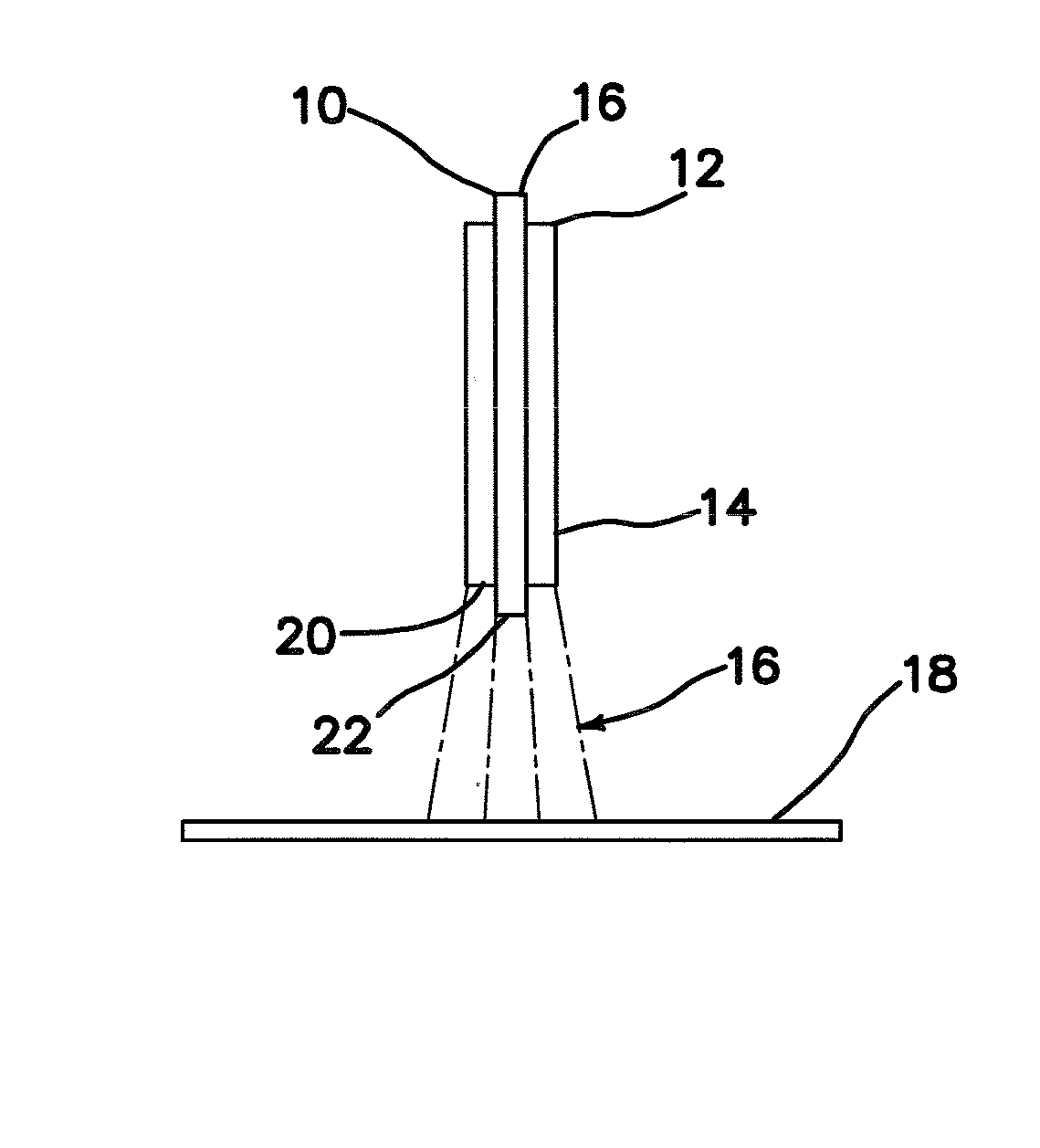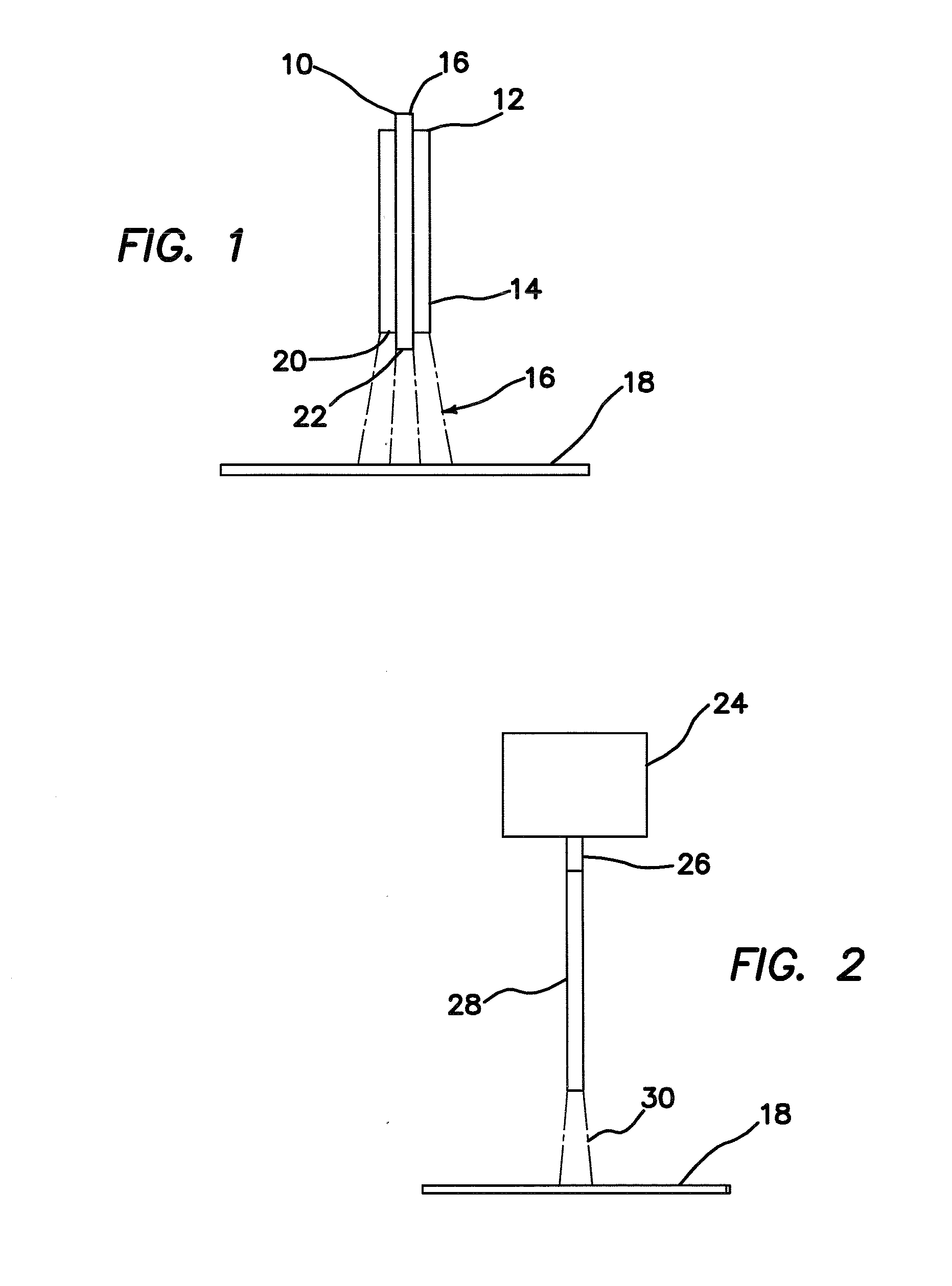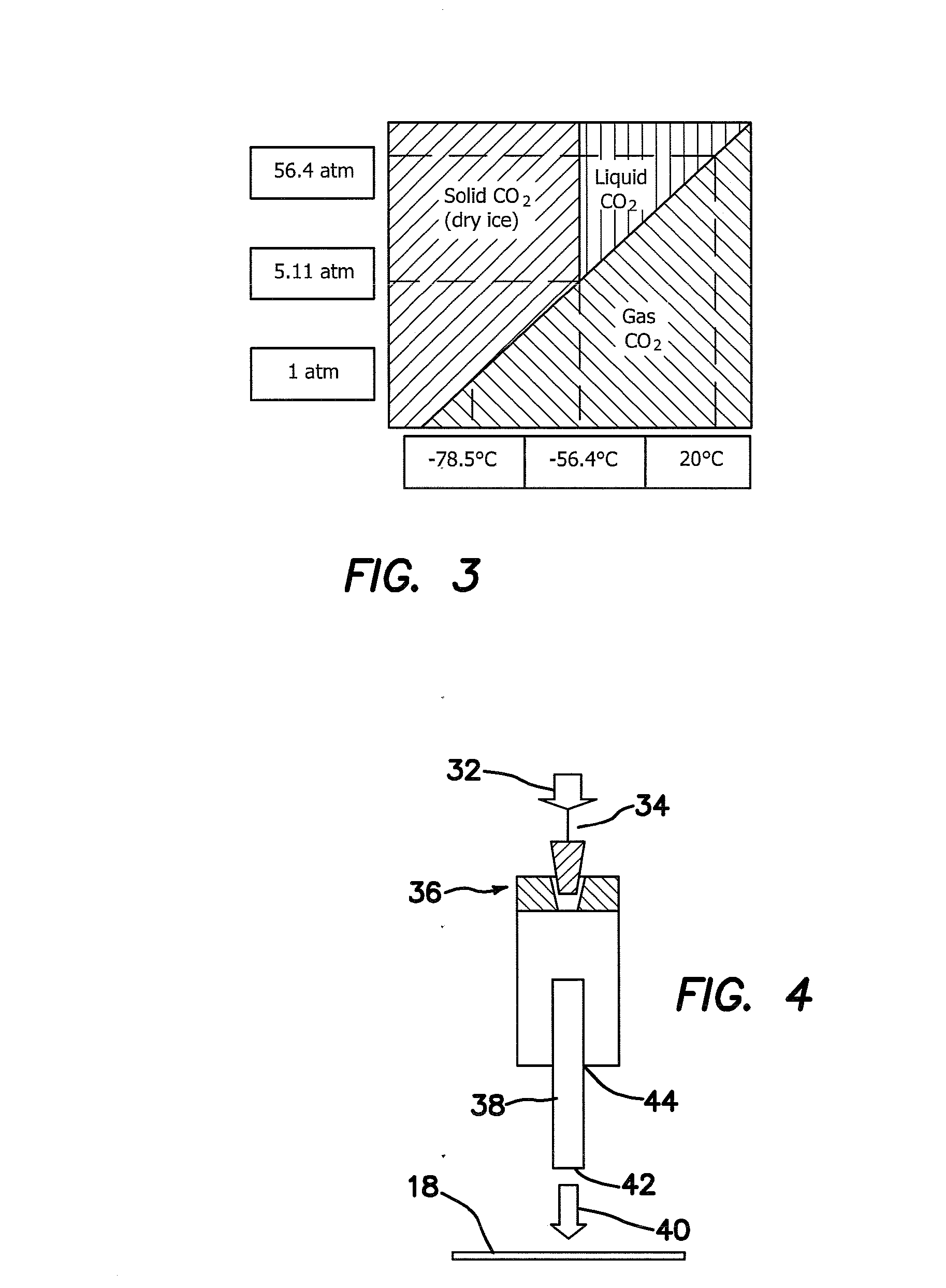Dynamic cooling of human skin using a nontoxic cryogen with no ozone depletion and minimal global warming potential
a cryogen and human skin technology, applied in the field of skin or tissue treatment, can solve the problems of high evaporation loss, dry ice formation immediately, compound formation of liquid at atmospheric pressure, etc., and achieve the effect of preventing ignition of heat transferring substances
- Summary
- Abstract
- Description
- Claims
- Application Information
AI Technical Summary
Benefits of technology
Problems solved by technology
Method used
Image
Examples
Embodiment Construction
[0035] The principles presented below provide a solution to the problem of finding an efficient substitute for tetrafluoroethane that is compatible with requirements for low global warming potential. In order to prevent cryogen ignition during pulsed laser exposure, one or more of the following methods are used.
[0036] Shielding Gas
[0037] The method of using a shielding gas to prevent oxygen from arriving at the heated spot is well established in electrical welding. Oxygen from the surrounding air is prevented from oxidizing the welding spot by using a shield of inert gas. A circular orifice mounted concentrically with the electrode can deliver the shielding gas. Examples of this technique are MIG (metal-inert-gas) welding where an inert gas surrounds the electrode, or TIG (tungsten-inert-gas) welding where a tungsten electrode heats up the welding materials. Typical shielding gases are inert gases such as argon, but nitrogen and carbon dioxide can also be used. This principle coul...
PUM
 Login to View More
Login to View More Abstract
Description
Claims
Application Information
 Login to View More
Login to View More - R&D
- Intellectual Property
- Life Sciences
- Materials
- Tech Scout
- Unparalleled Data Quality
- Higher Quality Content
- 60% Fewer Hallucinations
Browse by: Latest US Patents, China's latest patents, Technical Efficacy Thesaurus, Application Domain, Technology Topic, Popular Technical Reports.
© 2025 PatSnap. All rights reserved.Legal|Privacy policy|Modern Slavery Act Transparency Statement|Sitemap|About US| Contact US: help@patsnap.com



